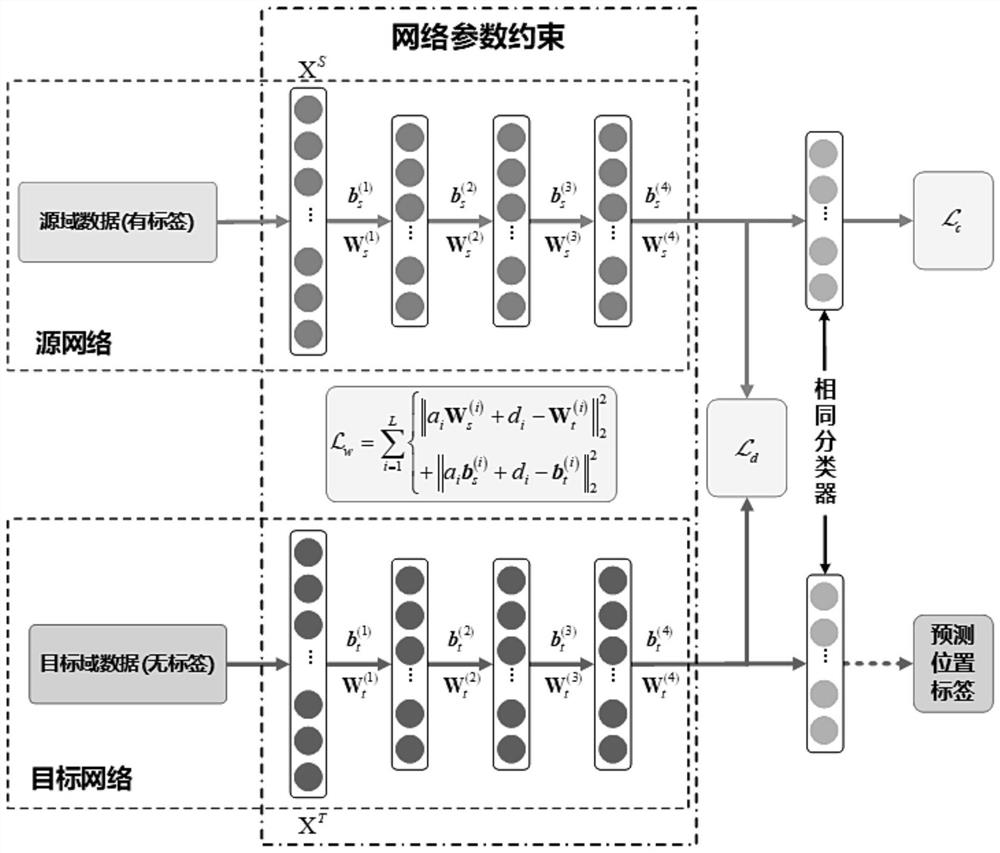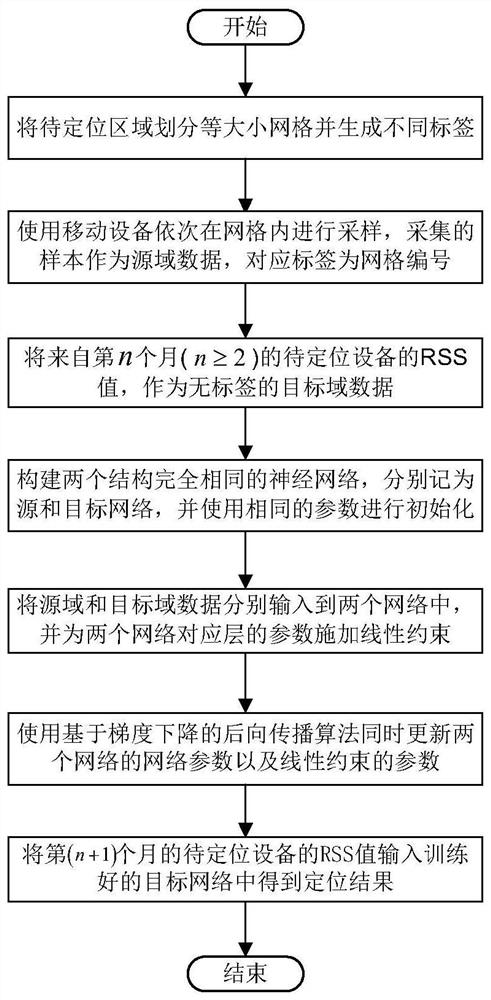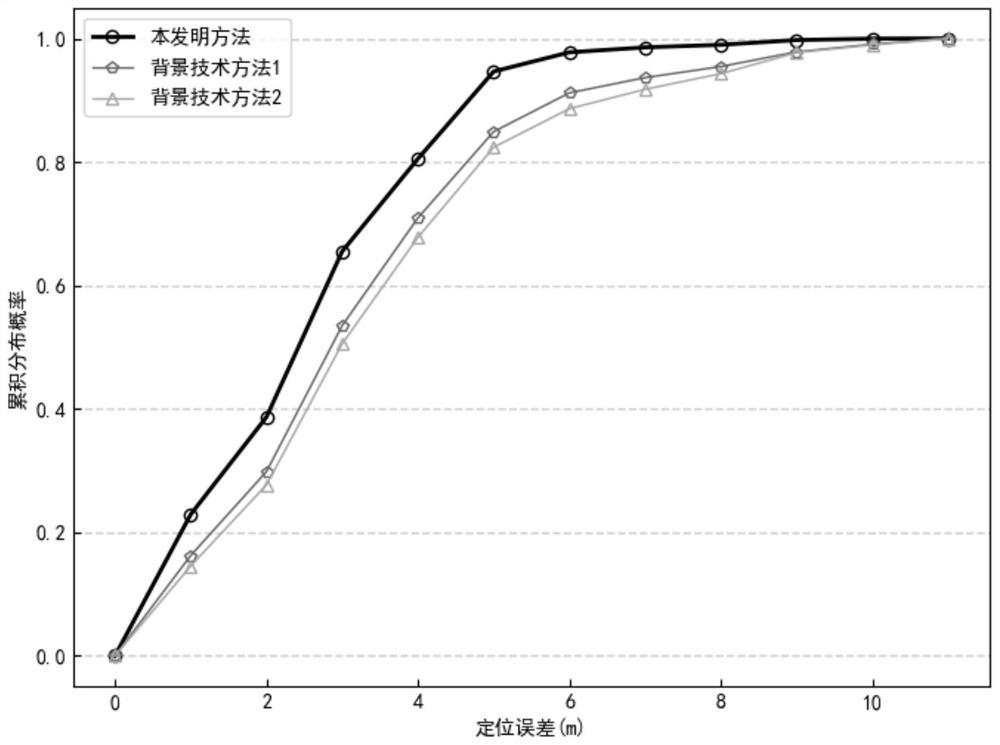An indoor localization method with dual network architecture based on parameter constraints
A parameter constraint and indoor positioning technology, which is applied in specific environment-based services, neural architecture, network planning, etc., can solve problems such as difficult positioning, limited data feature extraction capabilities, and model positioning performance degradation, and achieve the effect of narrowing feature differences
- Summary
- Abstract
- Description
- Claims
- Application Information
AI Technical Summary
Problems solved by technology
Method used
Image
Examples
Embodiment
[0087] This model is used to experiment with the RSS public data set collected at Jaume I University in Spain. The area of the data collection area is about 308.4 square meters, which is divided into 48 grids and covers a total of 620 access points. Use the samples and labels of the first month as the source domain data, including a total of 8640 samples; use the samples of the nth month (n≥2) as the unlabeled target domain data, the number of samples is 3120; use the (n+ 1) Each piece of RSS data received in real time every month is used as test data to verify the effect of the model.
[0088] The neural network contains 5 fully connected layers, the number of neurons in each layer is 256, 128, 128, 128 and 48, and the initialization parameters are set to random initialization.
[0089] The present invention designs two groups of experiments to verify the superiority of the proposed algorithm. The first group of experiments is to compare the positioning cumulative error pe...
PUM
 Login to View More
Login to View More Abstract
Description
Claims
Application Information
 Login to View More
Login to View More - R&D
- Intellectual Property
- Life Sciences
- Materials
- Tech Scout
- Unparalleled Data Quality
- Higher Quality Content
- 60% Fewer Hallucinations
Browse by: Latest US Patents, China's latest patents, Technical Efficacy Thesaurus, Application Domain, Technology Topic, Popular Technical Reports.
© 2025 PatSnap. All rights reserved.Legal|Privacy policy|Modern Slavery Act Transparency Statement|Sitemap|About US| Contact US: help@patsnap.com



